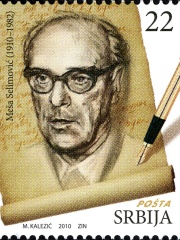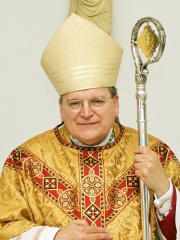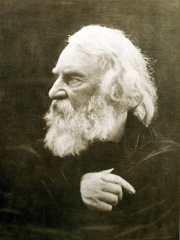WRITER
William Gibson
1948 - Today
 William Gibson
William Gibson
William Ford Gibson (born March 17, 1948) is a speculative fiction writer and essayist widely credited with pioneering the science fiction subgenre known as cyberpunk, although, as critics have noted, it's a category he has repeatedly distanced himself from. Beginning his writing career in the late 1970s, his early works were noir, near-future stories that explored the effects of technology, cybernetics, and computer networks on humans, a "combination of lowlife and high tech"—and helped to create an iconography for the Information Age before the ubiquity of the Internet in the 1990s. Gibson coined the term "cyberspace" for "widespread, interconnected digital technology" in his short story "Burning Chrome" (1982), and later popularized the concept, along with his usage of the matrix, in his acclaimed debut novel Neuromancer (1984), published by Susan Allison. These early works of Gibson's have been credited with "renovating" science fiction literature in the 1980s. Read more on Wikipedia
His biography is available in 56 different languages on Wikipedia (up from 54 in 2024). William Gibson is the 1,066th most popular writer (down from 1,013th in 2024), the 1,521st most popular biography from United States (down from 1,175th in 2019) and the 119th most popular American Writer.
William Gibson is most famous for his novel Neuromancer, which has been called the "best cyberpunk novel ever written" and "the archetypal cyberpunk work."
Memorability Metrics
Page views of William Gibson by language
Among WRITERS
Among writers, William Gibson ranks 1,066 out of 7,302. Before him are Radoje Domanović, Robert Graves, Brian O'Nolan, Clifford D. Simak, Zahra Khanom Tadj es-Saltaneh, and P. L. Travers. After him are Nikolay Nekrasov, W. G. Sebald, Paul Bourget, Marcus Manilius, Meša Selimović, and Ilia Chavchavadze.
Most Popular Writers in Wikipedia
Go to all RankingsRadoje Domanović
1873 - 1908
HPI: 67.73
Rank: 1,060
Robert Graves
1895 - 1985
HPI: 67.71
Rank: 1,061
Brian O'Nolan
1911 - 1966
HPI: 67.71
Rank: 1,062
Clifford D. Simak
1904 - 1988
HPI: 67.71
Rank: 1,063
Zahra Khanom Tadj es-Saltaneh
1883 - 1936
HPI: 67.71
Rank: 1,064
P. L. Travers
1899 - 1996
HPI: 67.70
Rank: 1,065
William Gibson
1948 - Present
HPI: 67.70
Rank: 1,066
Nikolay Nekrasov
1821 - 1878
HPI: 67.69
Rank: 1,067
W. G. Sebald
1944 - 2001
HPI: 67.69
Rank: 1,068
Paul Bourget
1852 - 1935
HPI: 67.69
Rank: 1,069
Marcus Manilius
50 BC - 50
HPI: 67.68
Rank: 1,070
Meša Selimović
1910 - 1982
HPI: 67.68
Rank: 1,071
Ilia Chavchavadze
1837 - 1907
HPI: 67.67
Rank: 1,072
Contemporaries
Among people born in 1948, William Gibson ranks 81. Before him are Amadou Toumani Touré, Tom Wilkinson, Nicolae Timofti, Radomir Antić, Luis Galván, and Brian Eno. After him are Bernard-Henri Lévy, Svetlana Savitskaya, Edmund Kemper, Jayalalithaa, Ichirou Mizuki, and Raymond Leo Burke.
Others Born in 1948
Go to all RankingsAmadou Toumani Touré
POLITICIAN
1948 - 2020
HPI: 68.08
Rank: 75
Tom Wilkinson
ACTOR
1948 - 2023
HPI: 68.03
Rank: 76
Nicolae Timofti
POLITICIAN
1948 - Present
HPI: 67.95
Rank: 77
Radomir Antić
SOCCER PLAYER
1948 - 2020
HPI: 67.78
Rank: 78
Luis Galván
SOCCER PLAYER
1948 - 2025
HPI: 67.75
Rank: 79
Brian Eno
MUSICIAN
1948 - Present
HPI: 67.74
Rank: 80
William Gibson
WRITER
1948 - Present
HPI: 67.70
Rank: 81
Bernard-Henri Lévy
WRITER
1948 - Present
HPI: 67.63
Rank: 82
Svetlana Savitskaya
ASTRONAUT
1948 - Present
HPI: 67.55
Rank: 83
Edmund Kemper
EXTREMIST
1948 - Present
HPI: 67.52
Rank: 84
Jayalalithaa
POLITICIAN
1948 - 2016
HPI: 67.48
Rank: 85
Ichirou Mizuki
COMPOSER
1948 - 2022
HPI: 67.48
Rank: 86
Raymond Leo Burke
RELIGIOUS FIGURE
1948 - Present
HPI: 67.47
Rank: 87
In United States
Among people born in United States, William Gibson ranks 1,521 out of 20,380. Before him are Jerry Lee Lewis (1935), Francis Gary Powers (1929), Arthur Ashe (1943), James Van Allen (1914), Clifford D. Simak (1904), and John Gotti (1940). After him are Pitbull (1981), Al Jarreau (1940), Joseph Kosuth (1945), Adrien Brody (1973), Thelonious Monk (1917), and Ronald Wayne (1934).
Others born in United States
Go to all RankingsJerry Lee Lewis
MUSICIAN
1935 - 2022
HPI: 67.73
Rank: 1,515
Francis Gary Powers
PILOT
1929 - 1977
HPI: 67.72
Rank: 1,516
Arthur Ashe
TENNIS PLAYER
1943 - 1993
HPI: 67.72
Rank: 1,517
James Van Allen
ASTRONOMER
1914 - 2006
HPI: 67.72
Rank: 1,518
Clifford D. Simak
WRITER
1904 - 1988
HPI: 67.71
Rank: 1,519
John Gotti
MAFIOSO
1940 - 2002
HPI: 67.70
Rank: 1,520
William Gibson
WRITER
1948 - Present
HPI: 67.70
Rank: 1,521
Pitbull
MUSICIAN
1981 - Present
HPI: 67.70
Rank: 1,522
Al Jarreau
SINGER
1940 - 2017
HPI: 67.69
Rank: 1,523
Joseph Kosuth
PAINTER
1945 - Present
HPI: 67.69
Rank: 1,524
Adrien Brody
ACTOR
1973 - Present
HPI: 67.69
Rank: 1,525
Thelonious Monk
MUSICIAN
1917 - 1982
HPI: 67.68
Rank: 1,526
Ronald Wayne
BUSINESSPERSON
1934 - Present
HPI: 67.68
Rank: 1,527
Among WRITERS In United States
Among writers born in United States, William Gibson ranks 119. Before him are Nellie Bly (1864), Ed Bradley (1941), Dalton Trumbo (1905), Eleanor H. Porter (1868), Mary Higgins Clark (1927), and Clifford D. Simak (1904). After him are Thomas Pynchon (1937), Edith Wharton (1862), Henry Wadsworth Longfellow (1807), Harriet Jacobs (1813), Tess Gerritsen (1953), and Roger Zelazny (1937).
Nellie Bly
1864 - 1922
HPI: 68.11
Rank: 113
Ed Bradley
1941 - 2006
HPI: 68.11
Rank: 114
Dalton Trumbo
1905 - 1976
HPI: 68.10
Rank: 115
Eleanor H. Porter
1868 - 1920
HPI: 68.04
Rank: 116
Mary Higgins Clark
1927 - 2020
HPI: 67.86
Rank: 117
Clifford D. Simak
1904 - 1988
HPI: 67.71
Rank: 118
William Gibson
1948 - Present
HPI: 67.70
Rank: 119
Thomas Pynchon
1937 - Present
HPI: 67.66
Rank: 120
Edith Wharton
1862 - 1937
HPI: 67.63
Rank: 121
Henry Wadsworth Longfellow
1807 - 1882
HPI: 67.61
Rank: 122
Harriet Jacobs
1813 - 1897
HPI: 67.61
Rank: 123
Tess Gerritsen
1953 - Present
HPI: 67.55
Rank: 124
Roger Zelazny
1937 - 1995
HPI: 67.47
Rank: 125















































